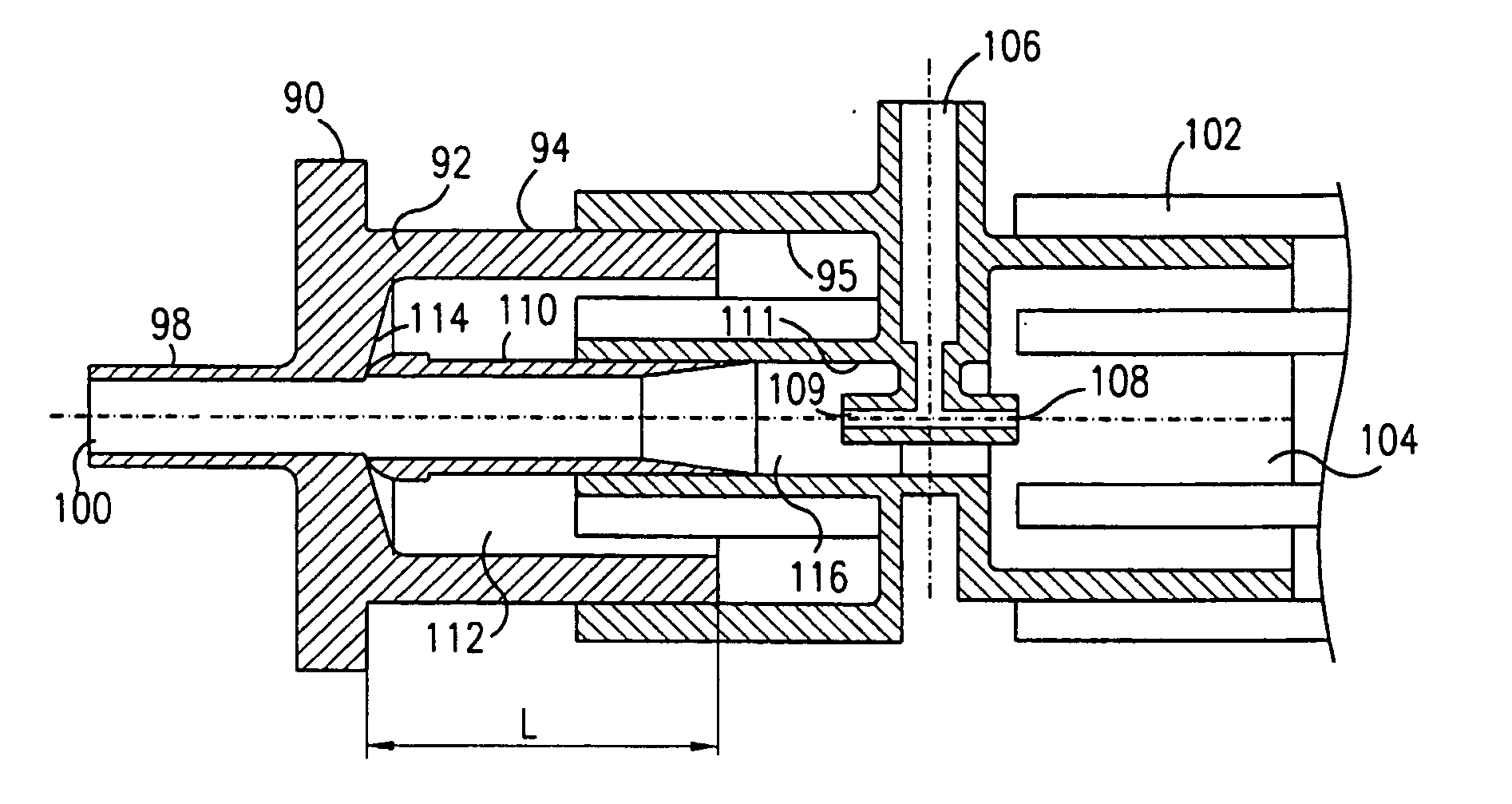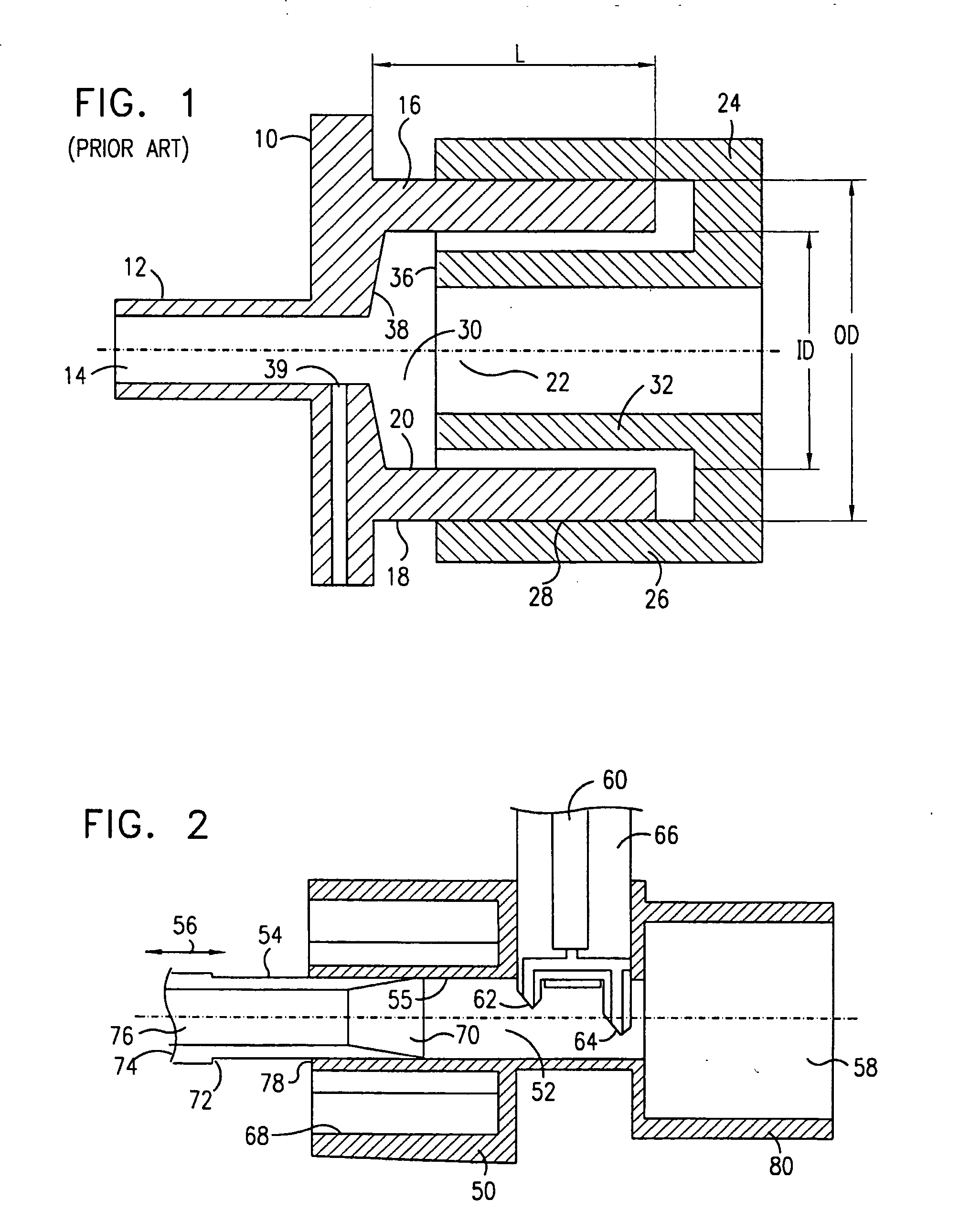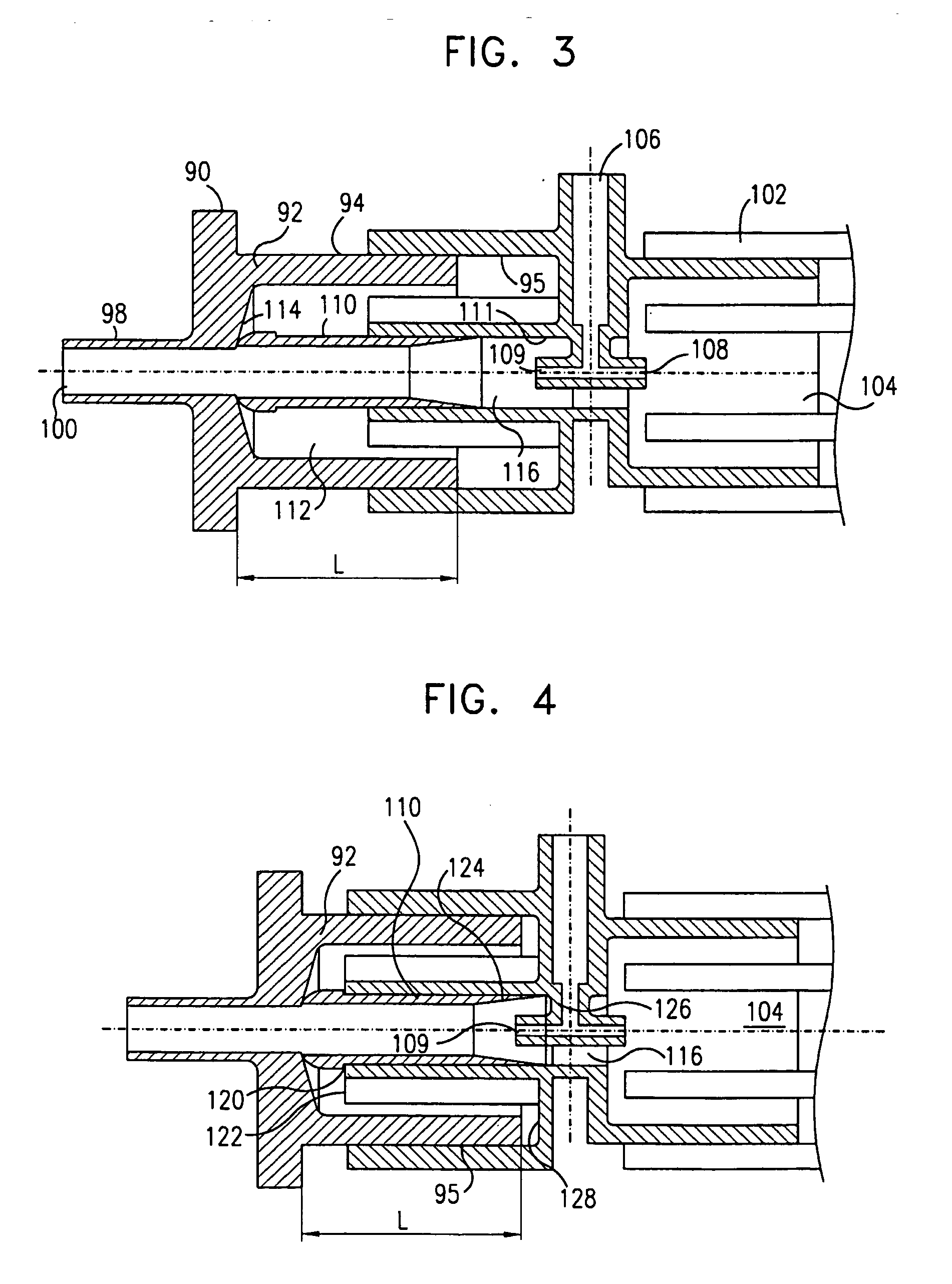Neonatal airway adaptor
a technology of airway adapters and neonatal tubes, which is applied in the field of airway adapters, can solve the problems of reducing the accuracy of capnographic measurement, affecting the insertion of other tubes and apparatuses, and difficulty in removing the et itself from the connector port,
- Summary
- Abstract
- Description
- Claims
- Application Information
AI Technical Summary
Benefits of technology
Problems solved by technology
Method used
Image
Examples
Embodiment Construction
[0042] Reference is now made to FIG. 1, which is a cross-sectional view of a prior art airway connection made between an endotracheal tube (ET) adapter 10 and a ventilation tube connector 24, typically attached at its remote end to breathing apparatus. One end of the ET adapter 10 is formed into a narrow tubular section 12, having a wall and a central bore 14, over which the end of ET tube itself is fitted. Neonatal ET tubes are available in sizes ranging from 2.5 to 4 mm. The exhaled and breathing support gases are passed from and to the patient through this bore 14. The ET tube is attached over this tubular section which generally has an inner diameter (ID) of 3.5 mm, this being suitable for most neonatal ET tubes. This ET adapter can also be provided with a gas monitoring port, terminating at a hole 39 in the ET adapter wall.
[0043] At the other end of the ET adapter, there is a wide bore tubular opening having a wall 16 and a central bore 22 of similar size to that of the ventil...
PUM
 Login to View More
Login to View More Abstract
Description
Claims
Application Information
 Login to View More
Login to View More - R&D
- Intellectual Property
- Life Sciences
- Materials
- Tech Scout
- Unparalleled Data Quality
- Higher Quality Content
- 60% Fewer Hallucinations
Browse by: Latest US Patents, China's latest patents, Technical Efficacy Thesaurus, Application Domain, Technology Topic, Popular Technical Reports.
© 2025 PatSnap. All rights reserved.Legal|Privacy policy|Modern Slavery Act Transparency Statement|Sitemap|About US| Contact US: help@patsnap.com



